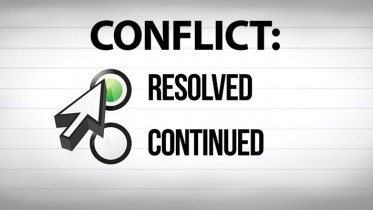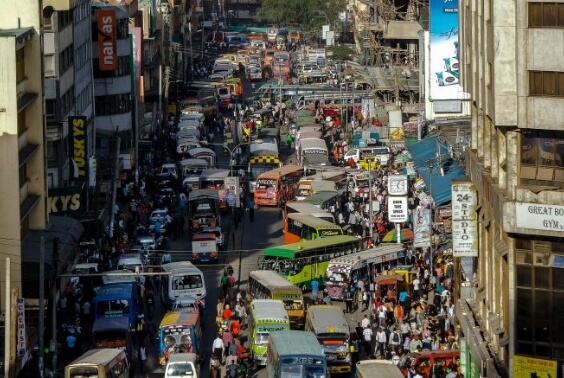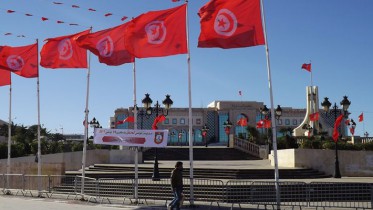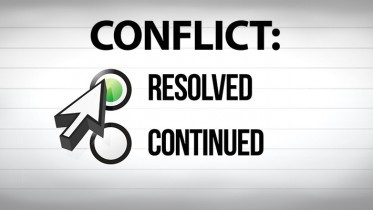- ISSUES IN PEACEBUILDING
Risks of Conflict Recurrence and Conditions for Prevention: The Paradox of Peacebuilding

It is not easy to establish peace in a region that has experienced conflict. It has been argued that a post-conflict region has, within the first five years, a high risk of recurrence of conflict (Zürcher 2007; Collier et al. 2008). In fact, 36 per cent of cases studied resumed conflict during a period from 1945 to 1996 (Walter 2004). Thus, a major issue in a post-conflict region is methods by which it may be transformed from an unstable to a stable society.
It is essential to generate knowledge of such risks for peacebuilding in a post-conflict region. It is absolutely critical to understand the mechanisms leading to the resumption of civil war, in order to prevent recurrence of conflicts, and to establish peace.
With this view in mind, this essay explains the risks and mechanisms for the recurrence of civil war in post-conflict regions, and considers conditions for preventing this. We show that current peacebuilding efforts by the international community are significant, and necessary for preventing the resumption of conflict. However, if the international community is not involved, we demonstrate that there is an “ironic option” for post-conflict regions in order to build a stable society.
Thus, a rational method for seeking stability is one based on the knowledge of conflicts available to a post-conflict region; this comprises the contradictory policy of a “tyranny for peace.” A dominant moral value implies that there is a necessity for involvement in conflict zones by the international community. However, in reality, there are numerous cases where Western countries intentionally do not intervene, or are unable to do so. Here we suggest that there is the paradox of peacebuilding in such cases. To be specific, available policies for preventing the resumption of civil war r in such cases do not involve a reconciliation and coexistence of parties, but rather oppression and exclusion of one party against another.
The following sections first explain the mechanisms for the transformation of a conflict into peace or into a new war. Second, we examine the risk of civil war recurrence, which is based on quantitative research, and focus on the role of political leaders, and structures in the conflict region. Finally, the essay considers desirable policies for preventing resumption of conflict.
Conflict Transformation as a Process
There are significant questions on how conflict affected regions move towards either peace or return to war. Ramsbotham et al. (2011) addressed this question in the field of conflict resolution studies, and pointed out the need to understand “Conflict Transformation” as a process.
The concept of “Conflict Transformation” that they introduced was employed to grasp the process of armed conflict as an occurrence, end, and resumption (see Table 1). These changes include major ones including change of the structure of the conflict, as well as minor ones such as changes to various components of the conflict structure. These mutually influence each other.
Table 1:Types of Conflict Transformation
| "Structural transformation" | Changes in conflict structure, that is, the parties in conflict, their incompatible objectives, and their power relationships. |
| "Issue transformation" | Changes of attitudes toward armed conflict by the main leaders. |
| "Contextual transformation" | Changes in social, regional, and international contexts in which conflicts are embedded. |
| "Actor transformation" | Changes of goals, values or beliefs, and directions within conflict parties or between their leaders. |
| "Personal and group transformation" | Changes of attitudes toward armed conflict by the main leaders. |
“Contextual transformation” means changes in social, regional, and international contexts, in which conflict is embedded, and provides most dramatic effects on conflict. Ramsbotham et al., state that the end of the Cold War was a prime example of context transformation that unlocked protracted conflicts in Southern Africa, Central America, and elsewhere.
“Structural transformation” is what arises from a change in the conflict structure, which is a set of parties in conflict, their incompatible objectives, and their power relationships. These changes can take many forms. If the root causes of the conflict lie in the structure of relationships within which parties operate, then a transformation of this structure is necessary to resolve the conflict. In asymmetric conflicts, structural transformation entails a change in the relationship between the dominant and weaker parties. It will then produce a change in the conflict party’s attitude regarding continuation of the conflict.
“Actor transformation” comes about through a change of actors, leadership, constituency of the leader, or adoption of new goals, values, or beliefs. As result of these changes, one of the conflict parties decides to seek peace by abandoning violence or by refusing negotiation, and aggressive military operations by adopting new hardline objectives or means.
“Issue transformation” may be explained as follows. Conflicts are defined by the conflicting positions parties take on issues. The conflict is transformed when conflict parties change their positions, or when issues lose salience or new ones arises. Changes of position are closely related to changes of interest, and changes of goals, and hence to actor transformation, and also to the context and structure of the conflict.
“Personal and group transformation” comes through a change of attitudes toward armed conflict by the main leaders. In the best-case scenario, a former guerrilla leader, committed to victory through any means, becomes a unifying national leader offering reconciliation, or the leader of an oppressive government decides to include his opponents in the government. However, in the worst case, the moderate intelligentsia, who were not committed to violence, become radical nationalists, mobilizing people by using propaganda.
What kinds of factors cause these changes and transformations in conflicts? We attempt to understand this from two viewpoints: the role of a political leader, and structural factors in a post-conflict region.
The Roles of Political Leaders
The resumption of conflict is strongly tied to the decisions of political leaders. Whether a political leader accepts the post-conflict situation or not is considered vital for establishing peace in a post-conflict region. Their judgment is dependent on the post-conflict environment. It is thought that political leaders would pursue peace to a greater extent than a continuation or resumption of conflict when the following conditions are in place; 1) decreased possibility of winning the conflict; 2) reduced rewards obtainable through victory; 3) increased costs for starting the conflict; 4) the length of the previous conflict; and 5) increased rewards for maintaining status quo.
Walter (2004, p.373) states that the cost of a previous conflict determines whether combatants are likely return to the battlefield again. Furthermore, she states that a post-conflict region is under high risk for recurring conflicts if the following conditions prevail: there is the desire for retribution, combat weariness, and increased information on combatant capabilities. She points out that countries with high levels of individual hardship and restricted outlets for nonviolent change would be more likely to provide individuals with an incentive for joining rebel groups. For a civil war to occur, intergroup antagonisms and grievances must exist, and resources and supplies must be available to support the movement over time. Furthermore, leaders must emerge to coordinate and manage recruitment. Thus, the role of leaders is also important.
Mason et al. (2011, p.172-173) argued that there is high possibility for civil war recurrence if there is “multiple sovereignty” in a post-conflict region, and rebel commanders have an incentive to resume conflict rather than to maintain peace. “Multiple sovereignty” exists when one or more organized armed challengers emerge and command a significant degree of popular support.
All theorists state that the post-conflict situation formed by the last conflict has a great influence on choices of political leaders. In the following section, we focus on the question as to what characteristics of the post-civil war environment enable a region to be more or less likely to experience a recurrence of conflict.
Structural Factors of Conflict Recurrence, which relate to the forms of the end of the previous conflict
First, there are arguments that conflict duration, casualty, and type are related to a recurrence of conflict. A society that has experienced prolonged conflict is unlikely to have an incentive for restarting conflict, because they understand that this comes at a high cost (Quinn et al. 2007, p.185). This is why conflict parties recognize the possibility of victory in the next war, and the requisite time to win it (Mason et al. 2011, p.178, 185). Furthermore, for each additional year that the previous war lasted, the probability for the failure of peace declines by about 10 per cent. Conflict duration can be an indicator of the relative strength of the government and rebel groups, as it shows us how they were able to endure armed conflicts.
A higher casualty hardens the hostility and distrust between former protagonists, making them more likely to resume conflict at a later date (Quinn et al. 2007, p.185; Mason et al. 2011, p.186). It indicates the difficulty to coexist with the previous enemy in a post-conflict society. Walter (2004, p.379-380), however, has different view, that the longer and presumably more costly the civil wars reduced the likelihood that a country would face another one. Furthermore, she believes that costs incurred during the previous war have no real effect on the likelihood that another war would occur.
Many researchers see no statistically significant causal relationships between civil war recurrence and types of conflict. Quinn et al. (2007, p.185) found that secessionist conflicts and ethnically based revolutions are as likely to occur as ideological revolutions followed by renewed conflict. 1
There are arguments that the likelihood of resuming conflict depends on whether it will end in a negotiated settlement or in a military victory. In general, power sharing and ensuring autonomy (devolution) 2 are greatly recommended policies for resolving conflict. However, such agreements form less than 30 per cent of the total (Wallensteen et al. 2011, p.151). Thus, there are two different views on causal relationships between power sharing and establishment of peace.
Collier et al. (2008, p.471) showed that the effect of granted autonomy is very large. Without autonomy, the decade-risk is 46.2 per cent, whereas with autonomy, the risk falls to 12.2 per cent. However, they added that there are only a few cases of autonomy, and that the variables are not statistically significant at conventional levels.
Walter (2004) has a different understanding. She found that governments that agreed to partition their country (territorial power sharing) as a result of one war were significantly more likely to face additional wars. According to this analysis, if the government readily grants autonomy as a means for settling a conflict, it becomes more vulnerable, and this could turn into the seeds of a new conflict.
However, why does it appear that—in some cases—power sharing has contributed to maintain peace in a post-conflict region? Mukherjee (2006) tried to answer this question. He argues that political power sharing must be suggested after either the government army or the rebel group emerges victorious, rather than a state of military stalemate. Furthermore, Call (2012, p.184-196) has stated that a key problem is in the characteristics of power sharing and in the implementation of agreements. He concluded that political and military power sharing contributes to the establishment of peace; however, territorial power sharing raises the likelihood of resumption of conflict. He added that in more than 80 per cent of cases where agreements were not withdrawn, armed conflicts did not recur. Yet, there are many cases of conflicts resuming after violations of agreements, so it would seem that the problem is whether parties have incentives to implement a power-sharing agreement or not.
Further, many researchers focus on the relationship between conflict outcome and recurrence. For instance, there are many statistical studies, which indicate that decisive military victory of either the government or rebel group is more likely to ensure peace than a negotiated settlement (Walter 2004; Quinn et al. 2007; DeRouen and Bercovitch 2008; Mason et al. 2011; Obayashi 2013). In a negotiated settlement, both government and rebel groups are able to conserve their energy and maintain military powers. In contrast, in a decisive military victory, the defeated side will understand the costs of restarting the conflict, and the winning side will try to control all of the state power. Therefore, the defeated side loses military power and incentives for starting the next war.
Meanwhile, there are studies that the possibility of the failure of negotiated settlements (renewed civil war) reduces every year. This is especially so if international peacekeeping forces are deployed in a conflict region after a negotiated settlement, therefore reducing the possibility of recurrence. Thus, many researchers believe that international peacekeeping forces and peace agreements contribute to keeping peace.
In addition to this, in the case of a decisive military victory, the key point is whether the winner is the government or a rebel group. A rebel victory is less likely to be followed by the recurrence of a civil war, than either a government victory or a negotiated settlement (Quinn et al. 2007, p.174). However, in the first year following a rebel victory, the risk of failure of peace is almost 200 per cent higher than it is for a government victory (Mason et al. 2011, p.184). According to this analysis, the probability of the failure of peace following a rebel victory is substantially higher than that following government victory within a period of three to four years after a victory. However, after three years, the risk of failure of peace is lower than it is for a government victory. Hence, the conclusive key point is whether the victorious rebels can survive with state power, gained after war, for about four years or not.
Structural Factors of Conflict Recurrence, which relate to the post-conflict environment
Here, we summarize the risks in a post-conflict region from the viewpoint of political, economic, and social environments.
There are debates surrounding the system of governance and the resumption of conflict. There is a general understanding that democracy prevents conflict and its recurrence, but there is no obvious causal relation between a democratic system and the establishment of peace in a post-conflict society. For instance, Quinn et al. (2007, p.185) found no significant relationship between the levels of democracy two years after the conflict ended and the likelihood of a civil war recurring. Furthermore, with regards to elections as one of key elements of democracy, Collier et al. (2008, p.470) found that the risk of conflict recurrence declined in the year of the election, but increased in the following year.
There are statistical results that show that true democracies are less likely to experience a renewed civil war than semi-democracies (Walter 2004, p.384). However, Collier, et al (2008, p.470) also observed that, unfortunately, severe autocracy was highly successful in maintaining post-conflict peace. Mason et al. (2011, p.184) found that both democratic and autocratic states are more capable of preserving peace after a conflict, but weak authoritarian regimes and partial democracies are most likely to fail to sustain the peace in the aftermath of conflict.
Many researchers argue about the relationship between socio-economic development levels and a failure of peace consolidation. There are analytical studies that indicate a low probability of resumption of a conflict if socio-economic development levels in a post-conflict region are high (Walter 2004, p.380; Quinn et al. 2007, p.186; Collier et al. 2008, p.469; Mason et al. 2011, p.186). Collier et al. (2008, p.469) states that the decade-risk falls to 26.9 per cent if the economy grows at 10 per cent per year, whereas the decade-risk is 42.1 per cent if the economy remains stagnant throughout the decade. As it is difficult to achieve these results by the post-conflict regions themselves, Quinn and Mason suggest that international investment is a crucial factor. Similarly, it is argued that social indicators, like infant mortality rates and average life expectancies, in a post-conflict region also have a certain causal relationship with conflict resumption.
Furthermore, there are arguments that if the government army has a large military capacity, the rebel group will not have an incentive to resume armed conflict, because the cost of war is large and the benefits small. In addition, Obayashi (2013) focuses on the military ability of rebel groups rather than that of governments, and demonstrates the following: peace is likely to be sustained if the rebel army has a great military strength, but if rebel groups control only partial territory or hold safe lands outside the conflict area, the probability of resuming armed conflict will be high.
Conclusion: Response to Conflict by the International Community and the “Ironical Option”
According to the understanding of conflict research discussed above, if the parties in conflict conduct policies as per the table given below, after conflict, there is a high likelihood that they will reduce the risk of renewed conflict and will be able to secure their interests.
Table 2:RATIONAL policy to prevent conflict recurrence
| For Actors | Policy |
|---|---|
| Government | To REMOVE the rebel group completely, to REFUSE political agreements like power sharing, to STRENGTHEN their own military power, and to BUILD an authoritarian regime. |
| Rebel Group | 1) To BUILD a true democratic system and to DEVELOP a stable economy by inviting international investment after winning the conflict.2) To BUILD an authoritarian regime that controls all violence and to DEVELOP an economy by getting support from external actors like the diaspora after winning the conflict. |
| International Community | To involve actively with the conflict during stages of negotiation, to support conflicting parties to reach a peace agreement, and to dispatch Peacekeeping Organization After the conflict, to assist in the democratic system and state monopoly on violence, to ensure a stable economic development by international investment or Official Development Assistance |
The irony of employing a policy, which is based on the results of analysis in conflict research, is as follows. If both government and rebel groups attempt to secure their own interests and seek post-conflict stability without demanding foreign intervention, they inevitably arrive at the formation of an extremely authoritarian system.
In the table, policy options to be taken by the international community indicate the significance and importance of peacebuilding. However, this does not alter the fact that in conflicts where the international community is not involved, policies adopted by the warring parties are inevitably pessimistic ones. If the conflict parties in “territorial conflict” cannot resolve the possession of and legal status of a specific territory and conflict region, thus becoming “Unrecognised Quasi-States”(or “De Facto States”), this problem will be especially serious (Togashi 2011).
Nowadays, when the international community intervenes in conflicts, people support the intervention as a necessity from the perspective of universal values or norms, and even in some cases assert that intervention is the duty of the international community. In reality, however, there are considerable conflict cases in which Western countries have not actively intervened or have been unable to intervene due to constraints. In these cases, the author believes that we must understand that the most rational and effective policy for stabilization of a post-conflict region is the paradoxical option of a “tyranny for peace.”
References
Call, Charles (2012) Why Peace Fails: The Causes and Prevention of Civil War Recurrence, Washington DC, Georgetown University Press.
Collier, Paul and Anke Hoeffler, Mans Söderbom (2008) “Post-conflict risks,” Journal of Peace Research, 45:4, pp.461-78
DeRouen, Karl and Jocob Bercovitch (2008) “Ensuring internal rivalries: A new framework for study of civil war,” Journal of Peace Research, 45:1, pp.55-74
Fearon, James (2004) “Why do some civil war last so much longer than others,” Journal of Peace Research, 41:3, pp.275-301
Mason, David and Mehmet Gurses, Patrick Brandt, Jason Quinn (2011) “When civil wars recur,” International Studies Perspectives, 12, pp.171-89
Mukherjee, Bumba (2006) “Why political power-sharing agreements lead to enduring peaceful resolution of some civil wars, but not others,” International Studies Quarterly, 50, pp.479-504
Obayashi, Kazuhiro (2013) “Rebel Organization and Postwar Peace Duration,” Kokusai Seiji (International Politics), 174, pp.139-152
Quinn, Michael, David Mason and Mehmet Gurses (2007) “Sustaining the Peace: Determinants of Civil War Recurrence,” International Interactions, 33:2, pp.167-193
Ramsbotham, Oliver, Tom Woodhouse and Hugh Miall (2011) Contemporary conflict resolution 3rd ed., Cambridge, Polity
Togashi, Kosuke (2011) “Heiwa Kochiku ni Okeru ‘Mi (Hi) Shonin Kokka’ Mondai” (The Problem of ‘Un(non)recognized States’ in Peacebuilding), Kokusai Seiji (International Politics), 165, pp.141-155
Wallensteen, Peter and Lotta Harbom, Stina Högbladh (2011) “Armed conflict and peace agreements,” Peace Research, London, Routledge
Walter, Barbara (2004) “Does Conflict Beget Conflict?” Journal of Peace Research, 41:3, pp.371-388
Zürcher, Christoph (2007), The Post-Soviet Wars: Rebellion, Ethnic Conflict, and Nationhood in the Caucasus, New York, New York University Press
Notes:
[1] However, the type of conflict is likely to affect conflict duration. Fearon (2004) stated that ethnic conflict is more difficult to end than conflict that has its origin in a coup d’etat and revolution.
[2] Both power sharing and devolution is the same where governments permit the opposition group access to political, economic, and military authority. The difference is that power sharing means that the government permits the opposition group access to authority within an existing territorial framework, but devolution means that the government grants a new territorial framework and authority to the opposition group. However, there is also an assertion that devolution is one type of power sharing. See Call (2012, pp.39-41, 186-195) for definition and classifications of power-sharing definitions.








